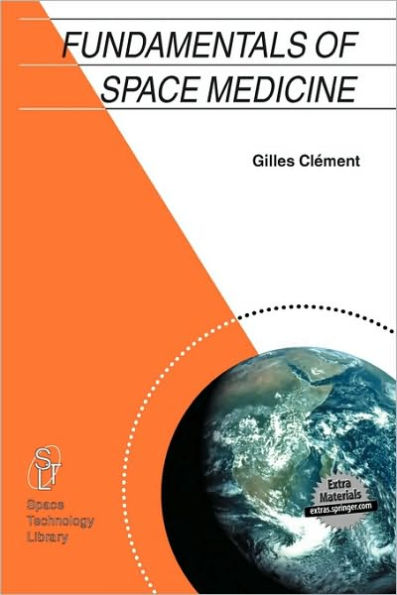Some results of these investigations have led to fundamental discoveries about the adaptation of the human body to the space environment. Gilles Clément has been active in this research. This readable text presents the findings from the life science experiments conducted during and after space missions.
Topics discussed in this book include: adaptation of sensory-motor, cardio-vascular, bone, and muscle systems to the microgravity of spaceflight; psychological and sociological issues of living in a confined, isolated, and stressful environment; operational space medicine, such as crew selection, training and in-flight health monitoring, countermeasures and support; results of space biology experiments on individual cells, plants, and animal models; and the impact of long-duration missions such as the human mission to Mars. The author also provides a detailed description of how to fly a space experiment, based on his own experience with research projects conducted onboard Salyut-7, Mir, Spacelab, and the Space Shuttle.
Now is the time to look at the future of human spaceflight and what comes next. The future human exploration of Mars capturesthe imagination of both the public and the scientific community. Many physiological, psychological, operational, and scientific issues need to be solved before the first crew can explore the enigmatic Red Planet. This book also identifies the showstoppers that can be foreseen and what we need to learn to fully understand the implications and risks of such a mission.
Some results of these investigations have led to fundamental discoveries about the adaptation of the human body to the space environment. Gilles Clément has been active in this research. This readable text presents the findings from the life science experiments conducted during and after space missions.
Topics discussed in this book include: adaptation of sensory-motor, cardio-vascular, bone, and muscle systems to the microgravity of spaceflight; psychological and sociological issues of living in a confined, isolated, and stressful environment; operational space medicine, such as crew selection, training and in-flight health monitoring, countermeasures and support; results of space biology experiments on individual cells, plants, and animal models; and the impact of long-duration missions such as the human mission to Mars. The author also provides a detailed description of how to fly a space experiment, based on his own experience with research projects conducted onboard Salyut-7, Mir, Spacelab, and the Space Shuttle.
Now is the time to look at the future of human spaceflight and what comes next. The future human exploration of Mars capturesthe imagination of both the public and the scientific community. Many physiological, psychological, operational, and scientific issues need to be solved before the first crew can explore the enigmatic Red Planet. This book also identifies the showstoppers that can be foreseen and what we need to learn to fully understand the implications and risks of such a mission.

Fundamentals of Space Medicine
364
Fundamentals of Space Medicine
364Paperback(2004)

Product Details
| ISBN-13: | 9781402032462 |
|---|---|
| Publisher: | Springer Netherlands |
| Publication date: | 04/29/2005 |
| Series: | Space Technology Library , #17 |
| Edition description: | 2004 |
| Pages: | 364 |
| Product dimensions: | 6.10(w) x 9.20(h) x 1.00(d) |
